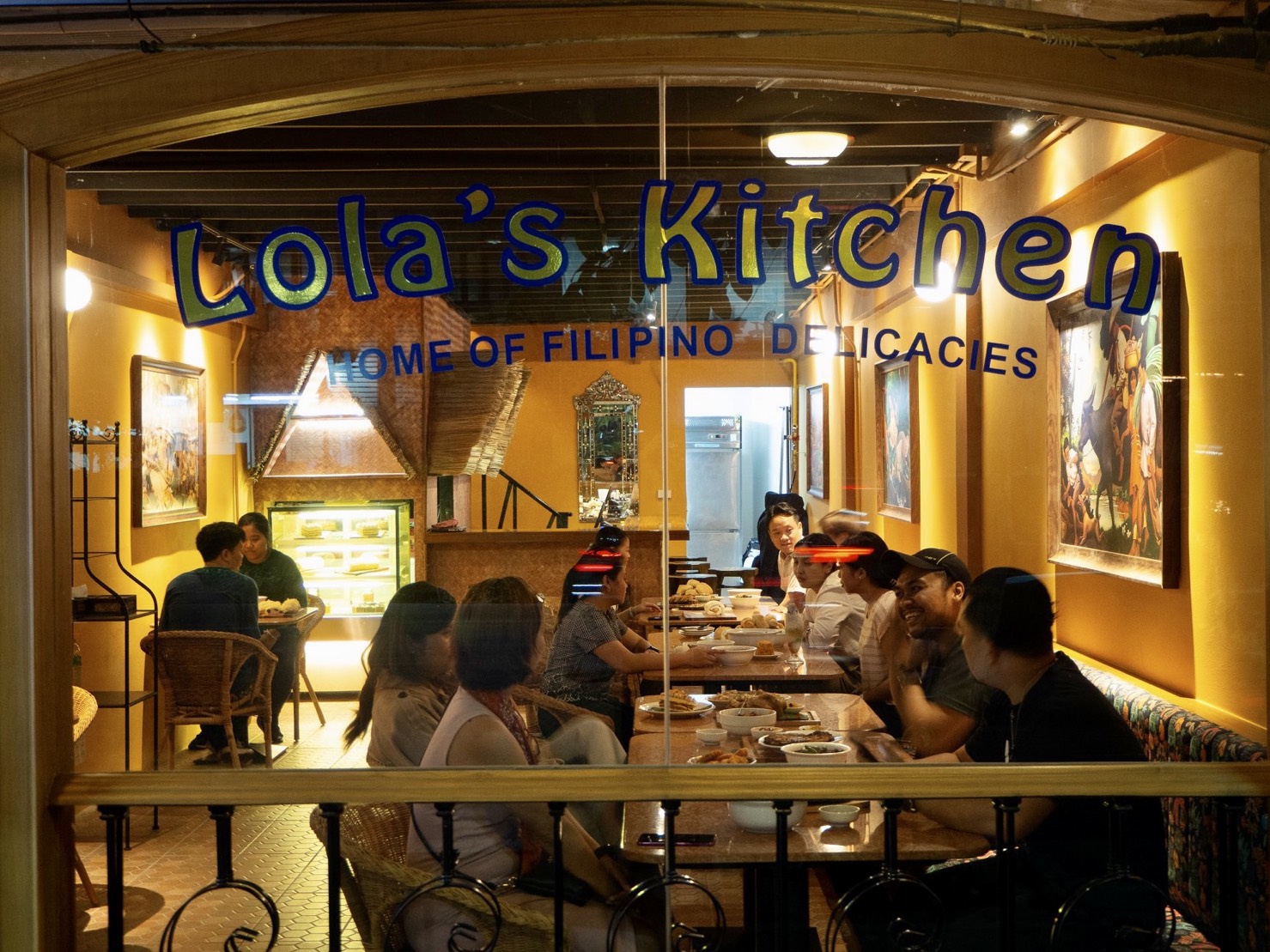Manila is one of the most multifaceted cities in Asia. Even before the arrival of the Spaniards in the 16th century it was known as Maynilad, named after a mangrove plant with white blossoms. In 1571 it became the capital of the Philippines. In 1975, 17 towns were merged together to create Metropolitan Manila or Metro Manila as it is often referred to.
It is home to around 14 million people. Manila is located in Central Luzon and surrounded by picturesque volcanic landscapes, evergreen tropical forests, a huge lagoon and the ocean - it is a dazzling cosmopolitan city surrounded by nature.
The city's contrasts are what make it so extraordinary and attractive. Manila's world famous historical sites and monumental buildings have a European influence and a captivating charm. They are located mainly in the old centre of the capital, in Manila City.
The second face of the metropolis has fascinating postmodern and futuristic traits and is known as Makati. Makati leads the way in trends and lifestyle. Grand boulevards, huge shopping malls and skyscrapers that symbolize the success of Manila's business and financial world are reminiscent of a big American city. The city's Asian soul is expressed in particular in Chinatown.
Places of interest in Manila City
Manila City is one of the 17 cities in the metropolis and full of historical buildings that relate the haunting history and legends of eras gone by.
City behind walls
South of the Pasig River on Manila Bay is a reminder of Manila's stony past - the walled city of Intramuros. It was built in 1571 by the Spanish conquistador Legaspi. Unscalable walls surrounded the palatial estates and churches until they were partly destroyed in the Second World War. The construction was restored however and to this day still contains historic buildings.
One such building is Fort Santiago, a defense fortress that enabled the Spaniards to keep watch over Manila Bay. San Agustin Church, the oldest church in the city, also survived the bombing. This unusually magnificent house of God has artistically painted walls and ceilings as well as choir stalls that were masterfully carved by Augustin monks. San Agustin is one of the four Baroque churches that were declared a World Cultural Heritage Site in 1993 by UNESCO.
Chinatown
The city's Chinese community with its exquisite culture and business life is found predominantly in the Santa Cruz and Binondo districts on the north side of the Pasig River, although the borders are not so well defined. Chinatown is an important commercial centre and shoppers' paradise.
Chinese Cemetery
The Chinese Cemetery in Santa Cruz is no ordinary cemetery but rather a wonderful necropolis. Mausoleums and tombs are ornately decorated and sometimes fitted with mailboxes, toilets, balconies and even air conditioners!
Rizal Park
Rizal Park, also known as Luneta, is located in direct proximity of Intramuros and is an oasis of peace and relaxation amidst the hectic goings-on in the city. The park was named after freedom fighter Dr Jose Rizal, who was executed here by the Spaniards in 1886. Fountains, magnificent green spaces, playgrounds and live music in the early hours of the evening make the park popular excursion destination for families.
Aquarium
The word "aquarium" is not befitting of Manila's new experience attraction. This enormous ocean park is the largest aquarium in the Philippines - an ocean in the heart of the city! It opened in 2008 and provides unique insights into the fascinating and vast underwater world of the Philippines and its many different species as well as a great view of Manila Bay.
Old Downtown Quiapo
Quiapo is a district of Manila City and is famous for its many shops where you can buy many things including cheap electronic goods and handicrafts. Plaza Miranda sits at the heart of Quiapo and is a time-honored public square in front of Quiapo Church that is used for many political, social and cultural events.
The magnificent Quiapo Church, also known as St. John the Baptist Church, was made famous by the Black Nazarene, a 400-year old crucifix made from black wood. Many Catholics come to the church to pray each day. The spectacular processions honouring the Black Nazarene on 9th January are the annual worshipping highlight.
Makati
The noble splendor of Makati, a city southeast of Manila City is an amazing sight, especially at night when the skyline is brightly lighted. Makati is the booming finance centre of the metropolis, the hub of the business world where futuristic skyscrapers made from glass and steel are a symbol of commercial ambition. The headquarters of most of the country's national and international companies are located here. The heart of the city beats to an energetic modern rhythm and continually attracts investors.
It has six 5-star hotels and around 3,000 restaurants and bars. Locals and tourists fill the huge shopping centres and eight remarkable shopping malls have been built in the city! The most famous are the Ayala Center and the Rockwell Center, which are of world-class standard and impress even the most sophisticated customers.
Forbes Park is an elite district and really is worth paying a visit. The luxurious exclusive residential area astounds even millionaires from the western world. Another of the city's highlights is the architecturally impressive Ayala Museum and its exhibitions detailing the history of the Philippines.
Pasay City
Pasay City is the capital of Philippine arts. The unusually diverse Cultural Centre of the Philippines (CCP) is a symbol of the country's cultural development. The CCP has taken on the role of preserving the cultural heritage of the Filipinos. Every (art) exhibition, presentation and show is an extravagant event that awakens all the senses. The theatre of the CCP caters for the poetic, dramatic and experimental, but also holds regular media performances, ballet, orchestra and art cinema events in the gigantic temple of art.
For those who are interested in the complex history and culture of the Philippine people, a visit to the Philippine Museum of Ethnology is recommended. The museum also exhibits cultural and artistic objects from the Muslim minorities.

Shopping
Manila City is a real shoppers' paradise. If you enjoy strolling around Asian markets and the enchantment of exotic aromas and bright colors, then you will feel at home in the city. Many places have lively market squares where you can stroll and marvel. Bargain hunters, treasure seekers and travelers who are searching for a special souvenir will find what they are looking for at the Divisoria Market in Manila City and the Baclaran Market in Pasay. The best and most beautiful fruit market is the San Andres Market in the Malate district.
The huge shopping malls in Makati are trendsetters and showcases of luxury, style and way of life - shopping centres where pleasure is guaranteed and the entertainment value is endless. They are a major contrast to the placid markets and shopping streets of Manila City. The Ayala Centre is a first-class shopping Mecca with over 2,000 shops, restaurants, cinemas, theatres and banks. Spacious light-flooded halls offer luxury goods, wellness products, designer labels and much more.
Restaurants
Whether you prefer vegetarian specialties, exotic fish dishes or love Arabian finger food, Manila has something to satisfy everybody's culinary preferences. The range is so extensive that it is hard to count the number of restaurants and flavors. However, one thing is certain and that is you will find something to satisfy your taste buds, whether at a fast food kiosk or an inexpensive eatery, a sophisticated restaurant or an exquisite gourmet temple. It seems as though all the tastes of the world are represented here.
There are Japanese, Korean, Australian, Indian, American and European restaurants as well as many other eateries offering excellent Philippine cuisine. Lovers of Chinese specialties should naturally pay a visit to Chinatown.
After Sunset
Manila has many streets lined with bistros, bars, pubs, lovely cafes and trendy taverns to keep the night owls, music fans and disco divas entertained. Revelers can sit outdoors and enjoy tasty cocktails, while taking in the mild night air and chatting away excitedly. The hottest clubs feature famous DJ's who spin their discs to the latest pop hits, techno beats, hip-hop or salsa rhythms.
Live music is played too and many of the dance floors fill up quickly. A popular meeting point for night owls is Greenbelt, a lifestyle centre in Makati. The atmosphere here in the bistros and cafes is open and friendly. Many other streets and squares in the sleepless metropolis twinkle as brightly as the stars in the sky above.
Excursion destinations around Manila
Volcanic Island of Taal
Taal is probably the smallest active volcano in the world. The some 300-metre high volcano sits on an island in the middle of the Taal Sea, 70 kilometres south of Manila. The town of Tagaytay, at an altitude of 600 metres, and the Mount Sungay Viewpoint provide fantastic views of the volcano and sea. The walk to the crater and the green crater lake is delightful.
If you leave early enough you can be back in Tagaytay in time for dinner. Besides a few good localities, not far from the city is an extraordinary restaurant, well known as the secret garden, which serves home-baked bread and tasty dishes with fresh ingredients from the restaurant's own organic garden. Tagaytay Picnic Grove is a stone's throw from the city and offers beautiful spots for picnics as well as a fantastic view over the sea and volcanic island.
Corregidor Island
The attractions on Corregidor Island are not white sandy beaches and palm trees but rather underground bunkers, tunnel systems and the ruins of former military barracks. The fortified island in Manila Bay was of strategic importance during the Second World War. Here the Filipinos and Americans joined forces against the attacks of Japanese troops. You can explore the area by foot or hire a mountain bike and follow the marked trails. Small tour buses also run through the island.
Pagsanjan Falls
The tropical ravine of Pagsanjan River and its waterfalls were made famous around the world by Francis Ford Coppola's war film Apocalypse Now, which includes scenes shot in this picturesque landscape. The view is defined by primeval rainforest, fertile gardens and bubbling springs.
A trip along the river by dugout canoe is a refreshing pleasure, but don't forget to take along a waterproof camera! Rafts can get up really close and stop by the majestic waterfalls, but the many rapids soon move them quickly backwards. Thrills and fun guaranteed!

The Clark pleasure paradise
The Clark Special Economic Zone (CSEZ), 80 kilometres north of Manila, was an American air base up until 1991. Nowadays alongside an international sought-after industrial complex, there is a huge leisure and amusement area. The excellent hotels and golf clubs, the eventful Fontana and Mimosa Leisure Park, casinos and many inexpensive shopping opportunities in the free trade zone, have all turned Clark into a famous magnet for visitors.
Clark is also a centre for adventure sports such as parachuting and motorbiking tours around the area. Action-packed events like the International Aerosports Festival, go-kart racing and drag races provide exciting experiences for the whole family. There are trekking tours to the surrounding national parks and to volcanoes such as Mount Pinatubo or Mount Arayat.
Subic Bay - bay of adventure
The historic Subic Bay, an enchanting bay 110 kilometres northwest of Manila, was a US Navy base for many years. Nowadays it offers a seemingly endless range of relaxation and sporting opportunities. A spectacular diving expedition to around 20 wrecks in Subic Bay is one of the most adventurous tours that can be experienced here. The 120-metre long USS New York is the main attraction among the sunken ships.
On the East Coast of the bay there are many places of interest including the protected rainforest area Bat Kingdom, home to the world's biggest colony of bats. Ocean Adventure, an ocean park with whale and sea lion shows is also worth paying a visit. The bay also has many glorious beaches, Dungaree, Officers', All Hands, Miracle, Nabasan and Hidden Beach are all amazing beaches with beautiful picnic areas.
Source: https://www.itsmorefuninthephilippines.com
Booking.com
Booking.com
Booking.com











Comments
Post a Comment